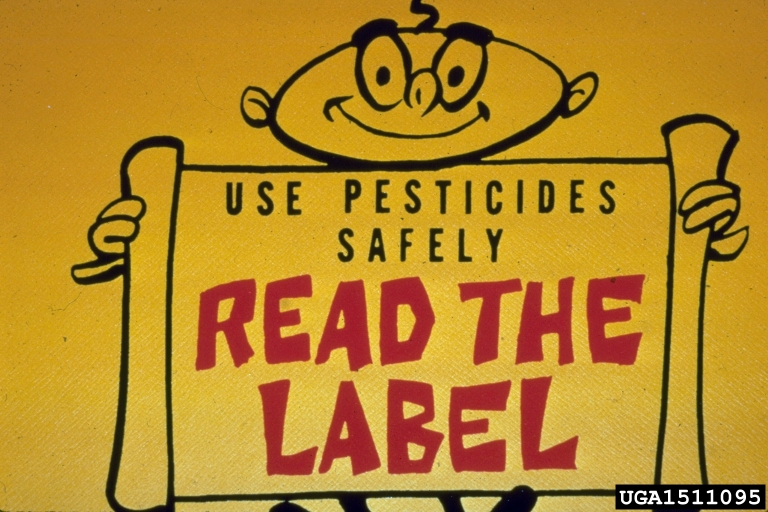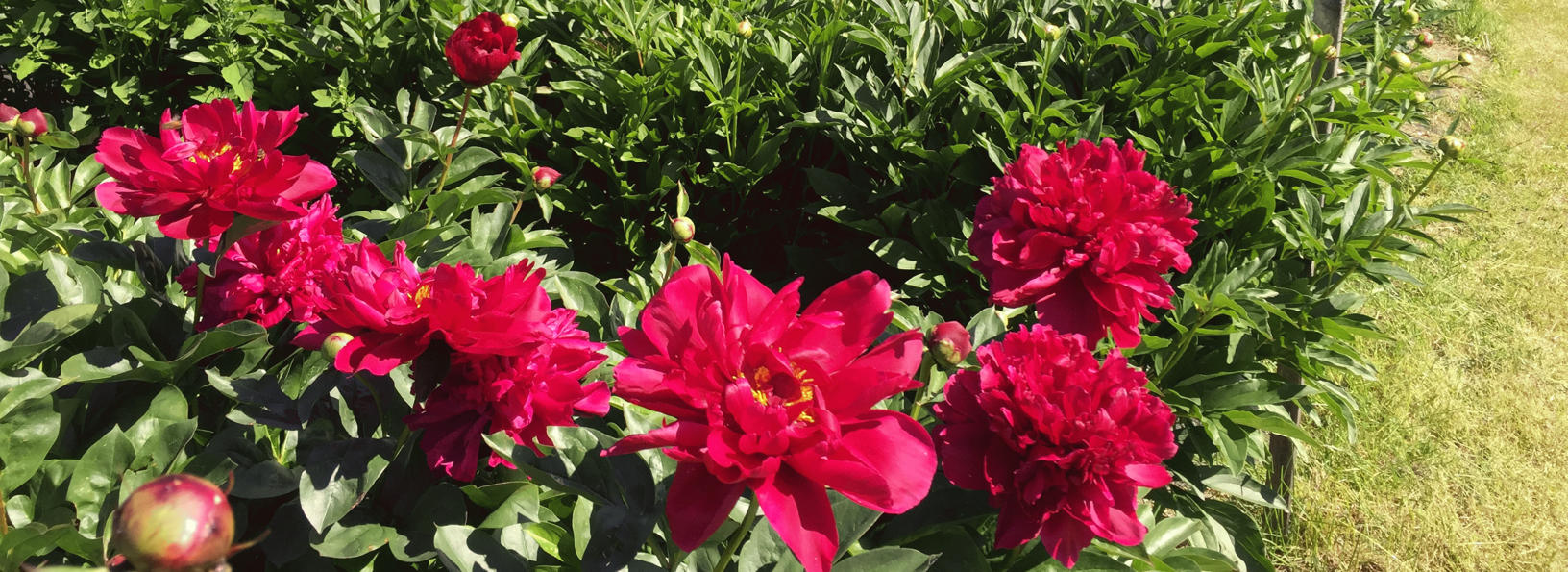Care of Peony Plants
Stressed plants can attract pests and potentially be more susceptible to pest damage; therefore the first goal of a peony producer should be to ensure their field is healthy by following local care guidelines. Consider the best site for planting, proper plant spacing, weed management, appropriate fertilizer rates for your soil type, and adequate irrigation. Each of these topics is a class in-and-of itself, so please consult your local agriculture Extension agent and experienced peony growers in your area for assistance with these details.
Post-harvest care of the plants can be important for overall pest management. Good sanitation practices are discussed below and should be considered equally with other pest control methods for managing pests in fields.
Control
Control options in peonies
Cultural Control:
Control weeds in field borders to eliminate overwintering or alternate habitats for insect pests. This can be accomplished through:
- mowing
- roguing
- installation of weed barrier fabric
- application of registered herbicides
Good sanitation practices that control crop debris after harvest can also help to eliminate overwintering or alternate habitats for insect pests. This can be accomplished through:
- deadheading spent blossoms
- removing highly infested buds
- removing plant debris from the field
Proper disposal of material will help further prevent buildup of pest populations. Bury or burn the material, but make sure you are aware of any outdoor burning restrictions for your area. Material can also be composted. It is important to know that composting might not get hot enough to kill pests, though mulching the material prior to composting can help.
Physical Control:
There are not many options or very practical options for physical control in peony fields beyond physically removing heavily infested buds in accordance with the good sanitation practices mentioned above.
Biological Control:
There are many beneficial organisms that will feed on thrips. Lady beetles, lacewings, spiders, hover flies, and big-eyed bugs are some of the common predators that will feed on thrips. However, because of their inclination toward hiding, thrips aren’t always available to these predators.
Populations of beneficial organisms may not be sufficient to adequately control pests, and there is very little research-based evidence that augmentative releases of predators are effective at suppressing thrips populations on a landscape scale. Practices that encourage beneficials, such as reduced broad spectrum pesticide use and keeping plants healthy, can help to maintain populations of beneficial organisms.
In addition to predators, there are bacteria and fungi that can act against insects. One naturally occurring fungal disease is called Beauveria bassiana. This fungus is also available commercially as a pesticide product.
Chemical Control:
Chemical controls are another important tool for controlling insect pests of peonies, and there are many products available that can control insects in fields. A 2016-2017 study on the effects of several insecticides on insect pests of peonies in Alaska has provided some preliminary results on product efficacy. Products containing acephate and flonicamid were shown to be effective against lygus bugs, but more research is needed to refine recommendations for application timing that are specific to our different growing regions in Alaska. The table below includes some common insecticide active ingredients that may be used on peonies in Alaska. The product you choose will depend on your pest situation, specific conditions of your field(s), and the overall management objectives of your fields. Evaluate your need for insecticides on a field-by-field basis, incorporating them into your integrated pest management plan when necessary. With any chemical control, treat a few plants and check for phytotoxicity before treating an entire crop. Early and consistent pest monitoring and scouting will help to determine the best time to treat for these pests in your own field.
| Active ingredient | Trade Names | Notes | Restricted Use? | Labeled For |
| Acephate | Orthene | Low selectivity, organophosphate | N | Ornamental herbaceous plants, Lygus bugs, thrips |
| Azadirachtin | AzaMax Botanical | Insect growth regulator | N | Ornamental herbaceous plants, thrips |
| Beauveria bassiana | Mycotrol | Entomopathogenic fungus | N | Ornamental herbaceous plants, Lygus bugs, thrips |
| Flonicamid | Aria | Systemic insecticide with selective activity against hemipterous pests | N | Ornamental herbaceous plants, plant bugs, thrips |
| Spinosad | Entrust | Naturally derived product made by soil bacterium | N | Ornamentals (herbaceous and woody), thrips in outdoor settings |
| Piperonyl butoxide | X-Clude | Insecticide synergist, enhances effectiveness of pyrethrin, permethrin, and other insecticides | N | Ornamental herbaceous plants |
Trade names listed here are used as common examples and do not imply endorsement of these products by the University of Alaska Fairbanks Cooperative Extension Service, nor is criticism implied of similar products that are not mentioned.
When using any pesticide product, make sure to choose products labeled for your site of application, read and follow the label, know the proper application methods, and calibrate your equipment with the appropriate nozzles for the task.

Read and understand the pesticide label. Pesticide labels are important documents with invaluable information about how to use the product safely and effectively. More information about pesticide labels can be found online from the National Pesticide Information Center website and PennState Extension.
Additional Resources
Additional information on these topics can be found at the links below
- Fact sheet on Lygus bugs in Peonies – Alaska Cooperative Extension Service
- Fact sheet on Thrips in Peonies – Alaska Cooperative Extension Service
- Pesticide information for Alaska – Alaska Department of Environmental Conservation – Pesticide Control Program
- Information on Reading Pesticide Labels – National Pesticide Information Center
- Online Pest Identification Portal – Alaska Cooperative Extension Service
- Video on Submitting Insect Samples for Identification – Alaska Cooperative Extension Service
- Example Field Scouting Datasheet
